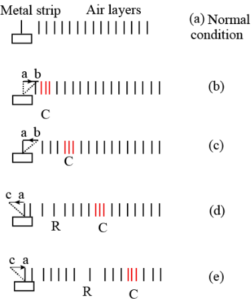Propagation of Sound Waves Exe-8A Short Ans Concise Physics ICSE Class 9 Selina Publishers Solutions. There is the solutions of Short Answer type Questions of your latest textbook which is applicable in 2024-25 academic session. Visit official Website CISCE for detail information about ICSE Board Class-9 Physics.
Propagation of Sound Waves Exe-8A Short Ans Concise Physics ICSE Class 9

| Board | ICSE |
| Class | 9 |
| Subject | Physics |
| Writer / Publication | Concise selina Publishers |
| Chapter-8 | Propagation of Sound Waves |
| Exe-8A | Production and Propagation of Sound Waves |
| Topics | Solution of Exe-8A Short Answer Type |
| Academic Session | 2024-2025 |
Production and Propagation of Sound Waves
Propagation of Sound Waves Exe-8A Short Ans Concise Physics ICSE Class 9 Selina Publishers Solutions.
SHORT ANSWER TYPE:
Question-1: State three characteristics of the medium required for the propagation of sound ?
Answer- The three main characteristics of a medium for sound to propagate is
1=>The medium must be elastic.
2=>The medium must have inertia.
3=>The medium should be frictionless.
Question-2: Explain with an example, the propagation of sound in a medium.
Answer- When a source of sound vibrates, it create a periodic disturbance in the medium near it. This disturbance then travels in the medium in the form of waves.
an example, the propagation of sound in a medium
Let us take a vertical metal strip with its lower end fixed and upper end being free to vibrate as shown in fig (a). As the strip is moved to right from a to b as shown in Fig (b), the air in the nearby layer is compressed (compression is formed at C). The particles of this layer compress the layer next to it, which then compresses the next layer and so on. Thus, the disturbance moves forward in the form of compression without the particles themselves being displaced from their mean positions.
As the metal strip returns from b to a as shown in Fig (c) after pushing the particles in front, the compression C moves forward and particles of air near the strip return to their normal positions. When the strip moves from a to c as shown in Fig (d), it pushes back the layer of air near it towards left and thus produces a low-pressure space on its right side i.e., layers of air get rarefied. This region is called rarefaction (rarefaction is formed at R). When the strip returns from C to its mean position A in Fig (e), the rarefaction R travels forward and air particles near the strip return to their normal positions.
Thus, one complete to and fro motion of the strip forms one compression and one rarefaction, which together constitute one sound wave. This wave is called longitudinal wave.

Question-3: Explain the meaning of terms compression and rarefaction in relation to a longitudinal wave.
Answer- Compression is a region in a longitudinal wave where the particles are closest together. A rarefaction is a region in a longitudinal wave where the particles are furthest apart. or
The region where the medium is compressed is known as compression and the region where the medium is spread out is known as a rarefaction.

Question-4: What do you mean by the term frequency of a wave? State its S.I. unit.
Answer- The frequency (f,) of a wave is the number of waves passing a point in a second. The unit of frequency is measured in hertz (Hz), where one hertz is equal to one wave per second.
Question-5: Define the term wave velocity. Write its S.I. unit.
Answer- Wave velocity is the distance travelled by a wave per unit time. It is the speed with which a disturbance of the particle like a crest/ trough, compression / rarefaction propagates through a medium. Its SI unit is ms–1.
Question-6: Draw displacement-time graph of a wave and show on it the amplitude and time period of wave.
Answer- The displacement-time graph is as below:

Question-7: Draw a displacement-distance graph of a wave and mark on it, the amplitude of wave by the letter a and wavelength of wave by the letter λ.
Answer-: The displacement-time graph is as shown below:

Question-8: State two properties of the medium on which the speed of sound in it depends.
Answer- (i) Elasticity (ⅱ) density
Question-9: Compare approximately the speed of sound in air, water and steel.
Answer- 1 : 4 : 15
Question-10: If you place your ear close to an iron railing which is struck some distance away, you hear the sound twice. Explain why?
Answer- Sound travels in iron faster than in air, so first the sound through iron rail is heard and then the sound through air is heard.
Question-11: The sound of an explosion on the surface of a lake is heard by a boat man 100 m away and by a diver 100 m below the point of explosion.
(a) Who would hear the sound first: boat man or diver?
(b) Give a reason for your answer in part (i).
(c) If sound takes time t to reach the boat man, how much time approximately does it take to reach the diver?
Answer- (a)=> diver
(b)=> sound travels faster in water than in air
(c)=> 0.25 t
Question-12: How does the speed of sound change with change in (i) amplitude and (ii) wavelength, of sound wave?
Answer- (i) No change (ii) No change.
Question-13: In which medium the speed of sound is more : humid air or dry air? Give a reason to your answer.
Answer- In humid air. Reason: Density of air decreases with 1 the increase of moisture and V∝ 1/√p.
—: end of Propagation of Sound Waves Exe-8A Short Ans Concise Physics ICSE Class 9 Selina Publishers Solutions :—
Return to :- Concise Selina Physics ICSE Class-9 Solutions
Thanks


